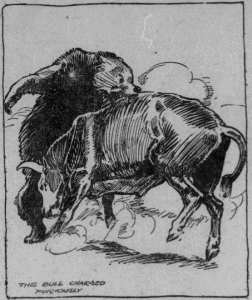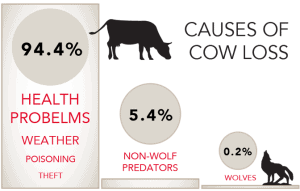
Here is George Wuerthner’s take on livestock allotment planning on the Bridger-Teton National Forest.
The Upper Green Allotment is the largest Forest Service grazing allotment in the West. It is a mixture of aspen, rolling sagebrush/grassland, willow-lined creeks, intermixed with ponds, and springs.
It contains the best wildlife habitat outside of a national park. Home to grizzlies and wolves, endangered Colorado cutthroat trout, sage grouse, elk, moose, pronghorn, and various rare amphibians, among other outstanding wildlife values.
That is one reason why the BTNF Forest Plan has categorized 93% of the area as DFC 10 and 12 status where protecting wildlife values is the primary goal. Yet the FS manages it as more or less a feedlot for a few local ranchers.
Since 1995, 34 grizzly bears have been “removed” from the Upper Green River allotment. When I questioned why the public’s wildlife was being removed instead of private livestock using our public lands, I was shut down and told I wasn’t allowed to debate these issues.
According to the Forest Service,
The purpose of the project is to continue to authorize livestock grazing in a manner that will maintain
or improve resource conditions. The Bridger-Teton Land and Resource Management Plan … provides direction to support community prosperity in part through livestock grazing (Goal 1.1 and Objective 1.1(h),… in a manner that avoids unacceptable effects from livestock use on range, soils, water, wildlife, and recreation values or experiences …
The majority of the project area is in DFC 10 (approximately 66 percent). The area theme is an area managed “to allow for some resource development and roads while having no adverse, and some beneficial effects on wildlife.” The management emphasis is to “[p]rovide long-term and short-term habitat to meet the needs of wildlife managed in balance with timber harvest, grazing, and minerals development.”
Grizzly bear management objective is to minimize the livestock related grizzly bear mortality.
All of the alternatives would permit more cattle to graze than has historically occurred (Table ES-2). All of the alternatives would be likely to adversely affect grizzly bears, which also sounds like a conflict with the forest plan requiring management for no adverse effects. Arguably, a “no grazing” alternative would not meet the purpose and need, but it looks to me like they haven’t considered a reasonable range of alternatives to reduce impacts on grizzly bears.
He’s got some interesting comments about the bias of range “cons” who “deferred to the ranchers:” “I can also assure you that most range cons are “want to be” ranchers…” My experience was that they were more likely to be “want to be” wildlife biologists. In contrast my experience with foresters (other than myself) is that they like to manage forests, and “no-action” has never appealed to them much, maybe because “it would result in no reason for your position.”




